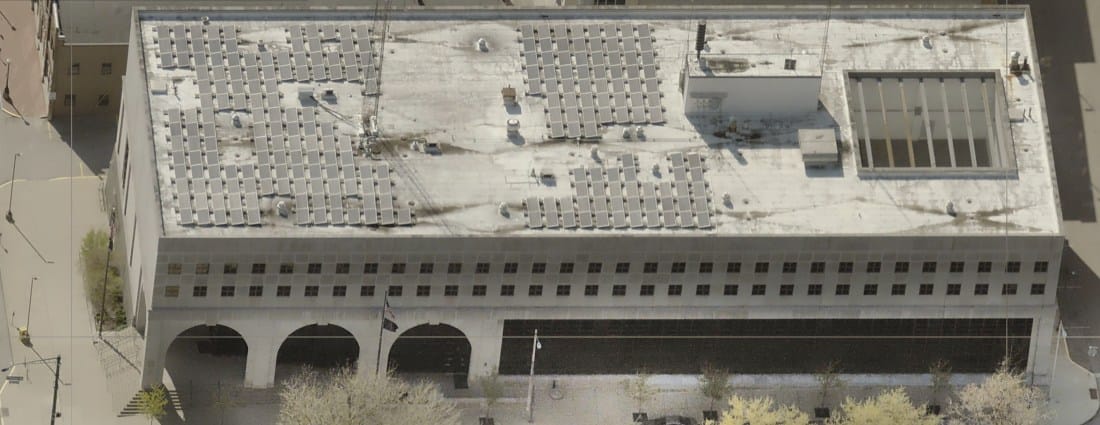Monroe County leaders to form core group to tackle jail issues: “It will be a beast to wrestle.”


In order to start working through two recent reports from consultants hired to study the local criminal justice system, a core group of Monroe County officials should be formed to start meeting as a public body as often as weekly.
In addition, there’s support for hiring one of the consultants to continue working with Monroe County officials on implementing recommendations.
That was the clear consensus from a joint meeting of the board of commissioners and county councilors on Wednesday night.
The reports from the two consultants—RJS Justice Services and Inclusivity Strategic Consulting—highlighted a number of challenges in Monroe County’s criminal justice system.
To address the problems documented in the reports, County councilor Trent Deckard said, “It is not a thing that we can snap our fingers and do.” Deckard described the magnitude of the criminal justice questions facing the county: “It will be a beast to wrestle. …And here we go.”
Problems that need attention, according to the consultants, include the chronic over-capacity population of the county jail, the repeated return of the same people to the jail, as well as the mental health and substance use disorders that affect many who are incarcerated at the county’s facility.
The RJS report describes the jail this way: “The jail facility is failing and cannot ensure consistent and sustainable provision of constitutional rights of incarcerated persons.”
At a joint meeting of county commissioners and councilors two weeks ago, Kenneth Ray, the lead consultant for RJS, summarized the report’s factual assessment of the conditions of the jail. “What we found was scary,” he said.
Ray elaborated: “We found structural problems. We found systems problems. We found ADA problems.”
He continued, “We found design issues that are very high risk—lack of adequate space in the booking area to manage the increase in the population, lack of adequate space for the separation of inmates for their own safety and welfare.”
If the jail were renovated to address the physical conditions, Ray estimated the cost at $51 million.
This Wednesday, commissioner Lee Jones described the dilemma this way. “I think for many of us, it was a bit of a shock to hear that we were going to have to look at a new jail pretty much, very quickly, [but] it’s going to take years to do it.”
Jones added, “In the meantime, it’s so important that we implement whatever programming we can to keep people out of the jail.”
A prominent theme of Wednesday’s meeting was the idea that the reports from the two consultants should not be left “on the shelf.” Several electeds talked about the idea of keeping the momentum going forward that has been created by the delivery of the reports.
To maintain forward progress, county attorney Margie Rice described the possibility of getting a core group of people formed and starting to meet as often as weekly, especially at the start, if that’s what it takes.
The group would consist of councilors, commissioners, a judge or two, and someone from the prosecutor’s office, the public defender’s office, and the health department, Rice said.
After the meeting, county council president Eric Spoonmore told The B Square that he would be interested in participating in the working group on behalf of the county council, but he wants to wait to see what the level of interest is from the other six members. Probably two councilors would participate, Spoonmore said.
Rice added that there would need to be someone to help coordinate and support the group. “Somebody’s got to publicly notice the meetings, set the agendas, and keep the minutes,” Rice said. At the joint meeting of commissioners and councilors two weeks ago, Rice said such a group would be subject to Indiana’s Open Door Law (ODL), as “a specific committee appointed to do a specific task.”
Subject to Indiana’s (ODL) is “Any committee appointed directly by the governing body or its presiding officer to which authority to take official action upon public business has been delegated.” The ODL’s definition of “official action” is broad, and includes activities like “receive information.”
There seemed to be interest at this Wednesday’s meeting in working on an agreement with Eve Hill, the consultant for Inclusivity Strategic Consulting, to continue working with Monroe County on criminal justice issues.
Hill’s report, delivered in June, described “intercept points” for reducing the number of people who are jailed.
Intercept Zero consists of community services and crisis services that are deployed to prevent someone from ever brushing up against law enforcement.
Intercept One is the diversion by law enforcement to treatment services without arrest or charge. Intercept Two is initial detention and initial court hearings, which allows diversion to community-based treatment. Intercept Three is the jail and court process that could allow diversion to community-based. Intercept Four is re-entry into the community after jail—linking people in jail to treatment services. And Intercept Five is community corrections—specialized community based criminal justice supervision with added supports for mental people with mental illness.
Hill’s focus on the people who are incarcerated, not the bricks-and-mortar of the building, was echoed at Wednesday’s meeting by former county commissioner Charlotte Zietlow, for whom the county’s courts and jail building is named.
During the opportunity for public comment, Zietlow said, “I think that you’ve got to recognize that constructing a facility will not deal with those issues.” She added, “That’s not only to save money for the county, but it’s to save lives and to help people have better lives.”
Zietlow concluded, “So you’ve got a human resource problem, and a health problem that you have to deal with, as much as a space problem.”




Comments ()